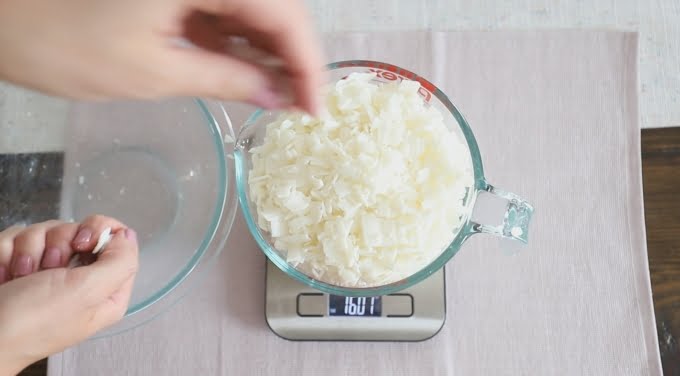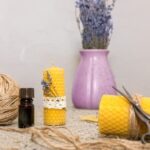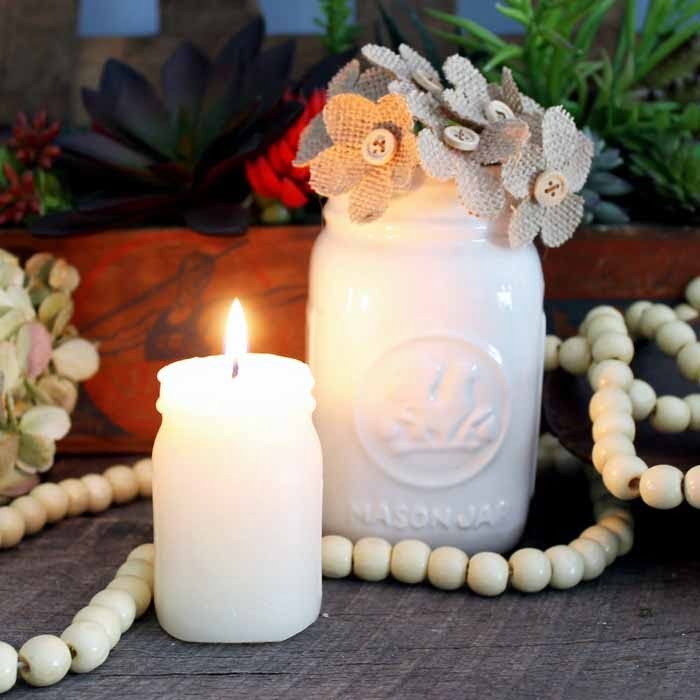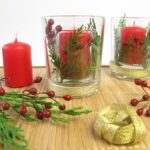Introduction to Making Soap And Candles
Making soap and candles has been around for centuries, with people using them for basic hygiene, decorating their homes, giving as gifts, and even being used as currency. It is believed that the ancient Egyptians were the first to use candles in religious ceremonies while early American colonists made both soap and candles as everyday necessities.
These days, making soap and candles is becoming increasingly popular because of its many uses and benefits. Soaps are used to clean ourselves and our belongings while also helping to reduce bacteria on surfaces. Candles can provide a warm light within a room or be used in aromatherapy sessions to help with relaxation. Additionally, creating homemade versions provides people with a sense of accomplishment as they customize the products based on what best suits their needs. Their creations are also more natural compared to store-bought counterparts that often contain unnatural ingredients. Whether you decide to make basic soaps with essential oils or decorative candles with interesting shapes, providing your family with handmade items can bring joy as well as bragging rights!
Types of Soap and Candles
Soap is generally made through a process called saponification, in which an alkali (usually sodium hydroxide or potassium hydroxide) reacts with fats and oils to form soap. A variety of fats, oils and other ingredients can be used to make soap; most common are vegetable oils such as olive, coconut and palm oil. In order to add fragrance and color to the soap, essential oils may also be added. Depending on the type of soap being made, other ingredients like herbs or exfoliants may be included for additional benefits.
Tools typically used for making soap include a double boiler or crock-pot for melting the oils, safety goggles for protection against splashing lye, rubber gloves for protection against contact with lye, measuring tools like cups and spoons, a digital thermometer that reads below 200°F to measure the temperature of the mixture while it heats up, a spoon or whisk for stirring and a mold (wooden or silicone) in which to pour the mixture into so that it can harden into bars of soap once cooled.
Candles are made by melting wax over heat. Waxes commonly used in candlemaking include beeswax (often mixed with other additives such as paraffin wax), soy waxes and palm waxes. Once melted along with fragrances (essential oils or synthetic scents) and/or colorants if desired, the hot liquid wax is poured into molds of various shapes and sizes to form candles after cooling down. Wicks should be embedded before pouring hot wax since it would be too hot to handle afterwards; wicks can either be pre-tabbed ones or cut from cotton string using metal wick sustainers. Other tools typically needed in candlemaking include safety glasses for eye protection when handling molten wax, pot holders or oven mitts when handling hot containers of melted wax from stovetop/microwave/crockpot etc., thermometers that can register temperatures lowered than melted wax (usually under 95°F) and various measurements tools like spoons and cups both metal ones that resist heat well so they do not deform when touched by hot wax but also plastic ones used later on when mixing fragrances and colorants into cool melted wax because metal ladles will damage delicate essential oil molecules when stirred in at higher temperatures.
Supplies Needed for Making Soap And Candles
Ingredients Needed for Making Soap and Candles:
• Base oils like coconut oil, palm oil, sunflower oil, etc.
• Essential oils or fragrance oils depending on the desired scent
• Sodium hydroxide
• Colorants such as liquid gel dyes, mica powder, natural herbs/flowers, etc.
Equipment Needed for Making Soap and Candles:
• Double boiler/stovetop pot for melting the oils
• Silicone molds (for soap) or candle jars and wicks (for candles)
• Glass measuring cups and spoons
• Rubber spatula & thermometer (for temperatures of the oils and lye solution mix)
Tools Needed for Making Soap and Candles:
• Stick blender if wanting to make cold process soap
• Wax melting machine or double boiler if making candles with waxes instead of oils
Other Items Needed for Making Soap and Candles:
• Containers or boxes to store finished product until use or sale
• Safety glasses & gloves when handling lye
Cost & Availability: The cost will vary greatly depending on the ingredients chosen. Most items needed are widely available in supermarkets, health food stores, online shops, candle supply stores, craft stores etc.
Step-By-Step Instructions for Making Soap And Candles
Making soap and candles at home can be a fun hobby or an enjoyable craft. The best part is you can use natural ingredients and have complete control over the finished product. Here are step-by-step instructions on how to make your own soaps and candles:
1. Gather all of the needed supplies including a pot, thermometer, moulds, moldsprays, organic fats, dyes or colorants, scents (optional) and waxes or other additives.
2. Prepare the ingredients by heating them in the pot slowly until they reach 160°F (the “trace” temperature). At this point you can add any colourants or scents as desired. Keep stirring so that the mixture doesn’t burn on the bottom of the pot.
3. After all the ingredients have been added to the pot and fully melted, carefully pour the hot liquid into moulds that are lined with parchment paper or a thin layer of Vaseline for smoothing out air bubbles in your finished soap bars later on.
4. Allow your homemade soap bars to cool completely before unmolding them from their moulds. Cut them into individual bars if you wish to give away as gifts!
5. To make your own candles: select safe containers that can withstand heat such as glass jars or make your own using waxed tins; melt down beeswax and/or paraffin waxes according to package directions in a double boiler; when fully melted add scent oils and/or dye blocks to get desired colour ; finally pour liquids into tin containers for votive holders or jar for aromatherapy candles!
For more detailed information about making either type of soap or candle at home, it may be helpful to consult expert advice from online tutorials, professional websites and even books specifically written about these topics. There are also many short video tutorials available online if you prefer a hands-on approach instead of reading through articles or books ” whatever works best for your style!
Advancing Your Skills
Creating unique scents, colors and designs is a great way to enhance your existing soap and candle making skills. For instance, you could start by experimenting with different essential oils or fragrance oils to create complex combinations of scent that evoke certain emotions. As for color, use natural dyes such as beetroot, turmeric and spinach for their vibrant hues. To create unique designs, use tried-and-true techniques like adding molds to the cast during the soap curing process; carving one large bar of soap into various shapes after cutting it from the loaf; swirling two or more poured candle waxes together before they set; or lightly sprinkling glitter over a liquid candle wax surface before hardening. Finally, experiment with using both unusual crafting objects and materials that would be atypical in a traditional soap/candle making environment (such as plastic sheeting) to add texture and depth to projects. With a bit of practice, you can soon become an expert at making truly exceptional handmade soaps and candles!
Resources for Supplies and More Information
Online Suppliers:
Amber’s Garden Soap Supplies is an online supplier that offers a wide variety of soap-making supplies. They also provide classes, tutorials, and recipes. Bramble Berry is another online supplier that has been popular with soap makers for years. They offer a large selection of molds, fragrances oils, and other luxurious ingredients to choose from.
Helpful Resources: The Soap Making Resource provides helpful information about making natural cold process soaps. They also provide helpful tips to get the best results when making homemade soaps. Bramble Berry’s blog is packed with recipes that include step-by-step instructions on how to make different kinds of soaps, lotions, and candles. Craftsy’s blog is another great source for those wanting to learn more about candle making and other related topics.
Professional Organizations: The Handcrafted Soap and Cosmetic Guild (HSCG) is an international non-profit trade association comprised of members who are dedicated to the handcrafted soap and cosmetic industry. The guild offers services such as education and mentoring programs, product reviews, an online business resource center, insurance deals for members and a worldwide network of professionals in the industry. The National Candle Association (NCA) is another professional organization for candle makers that serves as an advocate for businesses in the U.S., working to promote safety standards in the industry as well as educating consumers on topics such as fire safety and general candle care tips.
Summary and Conclusion
Making soap and candles can be a fun and rewarding hobby. It allows you to be creative while simultaneously having a project that produces tangible results. In this article, we discussed some tips for beginners on how to get started making both soaps and candles. First, we discussed what tools and materials are needed in order to begin crafting these items. We then detailed the basics for creating soap, including different types of oils, lye concentrations and scenting agents used. For candle making, we explored wick sizes, wax types and pouring techniques. Finally, mentioning appropriate temperature levels for melting waxes was included in the discussion as well as cooling methods used to create themed shapes. Along with all this information were helpful hints on how best to approach the process and additional resources one could use if further help or instruction was needed.
Soap-making and candle-making can bring about joyful times spent creating something beautiful that is also functional. safety precautions should always be followed when experimenting with lye or hot wax so use caution before beginning your projects! With the right materials, knowledge of the basics and lots of creativity one can make anything they set their mind to; like soaps or candles! Additional advice can always be found through craft stores, magazines or books dedicated to DIY projects as well as sites on the internet that specialize in this type of creative outlet. Have fun!

Welcome to my candle making blog! In this blog, I will be sharing my tips and tricks for making candles. I will also be sharing some of my favorite recipes.





